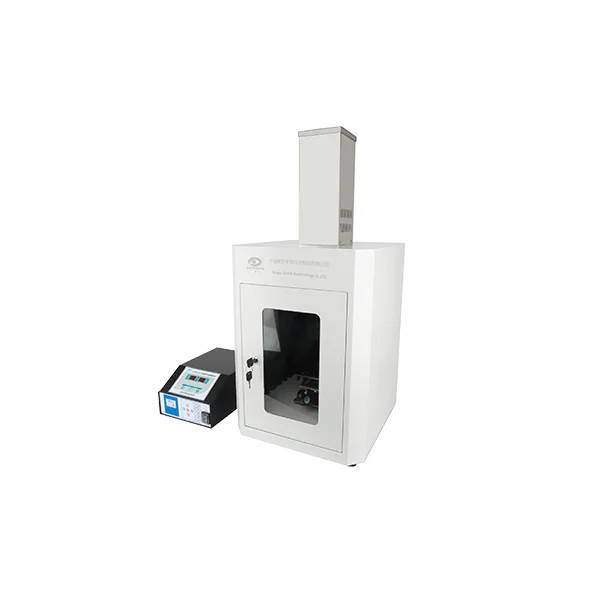With the rapid development of technologies such as nanomaterials, high-intensity cleaning, and cell disruption, ultrasonic technology has penetrated into many manufacturing fields. As the "heart" of the ultrasonic system, the selection of industrial sonicators is particularly critical. A suitable industrial sonicator can not only improve work efficiency, but also ensure the stability and reliability of the experiment or production process. So, facing the dazzling array of products on the market, how should enterprises and users choose a suitable industrial sonicator? This article will conduct an in-depth analysis from multiple angles such as principles, performance, application requirements, and purchasing skills.
1. What is an industrial sonicator?
The industrial sonicator is a device that converts electrical energy into high-frequency mechanical vibrations and is the core component of the ultrasonic system. It uses the "cavitation" effect of ultrasonic waves in liquids to generate high-intensity shear force and high-frequency alternating water pressure in liquids through transducers, horns, tool heads and other components, so that cavities and bubbles are formed in the liquid. The bursting of bubbles releases a strong impact force, which is used to break cells, disperse polymers, and homogenize and mix.
The industrial-grade ultrasonic generator developed by SCIENTZ is an innovative device optimized and upgraded on the basis of its experimental-level technology. It adopts dual-excitation transducer technology, which can provide higher ultrasonic power and longer continuous working capacity, and is very suitable for manufacturing companies that need efficient ultra-fine crushing.
2. Application scenarios of industrial sonicators
To choose a suitable ultrasonic generator, you first need to understand its application scenarios. It mainly includes the following areas:
Nanomaterial preparation: When preparing nano-scale materials, the raw materials need to be fully dispersed and broken to the nanoscale. The cavitation effect of ultrasound can achieve efficient and uniform particle size distribution.
High-intensity ultrasonic cleaning: The tiny bubbles formed by ultrasound in the liquid burst to produce a strong impact force, which can remove dirt, grease or residue on the surface of the object. It is suitable for cleaning precision molds, electronic components, etc.
Animal and plant cell tissue crushing: Using high-intensity ultrasonic shear force and shock waves to break the cell wall and release the effective ingredients in the cell, it is often used in the fields of biopharmaceuticals and food processing.
Polymer dispersion: Through the action of ultrasonic shock waves, the polymer is evenly dispersed to improve the stability of the solution.
Different application scenarios have different requirements for the power, frequency, continuous working time, etc. of the equipment. This is also the first step in choosing an ultrasonic generator: clarify the needs.

3. Key parameters to pay attention to when choosing an ultrasonic generator
Ultrasonic power:
Ultrasonic power is an important parameter to measure the intensity of ultrasonic waves. The greater the power, the stronger the cavitation effect, and the more obvious the crushing and dispersion effects. But the greater the better, the appropriate power should be selected in combination with the process requirements and sample volume, otherwise it may cause excessive damage to the sample or waste of energy.
Generally speaking:
For small tests/laboratory use: the power is 500W~1000W;
For pilot/small-scale production: 2000W~3000W is recommended;
For large-scale production: 5000W or even higher power is required.
Working frequency:
The frequency of ultrasound determines the size and number of cavitation bubbles:
Low frequency (20~28kHz): strong cavitation, suitable for cell crushing and cleaning heavy pollutants;
Medium frequency (40~60kHz): mild cavitation, suitable for homogenization and dispersion;
High frequency (>80kHz): weak cavitation effect, suitable for precision cleaning and applications with higher sample protection.
When choosing, it is necessary to weigh the requirements of the process for destructive power and uniformity.
Continuous working time:
Industrial production often requires long-term or even all-weather operation, which requires the ultrasonic generator to be able to output ultrasound stably and dissipate heat well. Like SCIENTZ's industrial ultrasonic homogenizer, it adopts dual excitation transducer technology and good heat dissipation design, which can achieve long-term continuous operation and is an ideal choice.
Transducer and horn quality:
Transducer and horn are key components for converting electrical energy into mechanical energy and amplifying it. The material, design, and processing accuracy directly affect the life and efficiency of the equipment. High-quality titanium alloy and precision-machined horns can provide better stability and cavitation effect.
Control system:
Modern ultrasonic generators are generally equipped with digital control systems that can adjust parameters such as power, frequency, and time. Some high-end models even support automatic detection and load adjustment to ensure that the system operates in the best condition.
Fourth, common misunderstandings when choosing
When purchasing ultrasonic generators, users often fall into the following misunderstandings:
Only look at power, not frequency and energy efficiency: blindly pursue high power, while ignoring the frequency matching and power utilization suitable for their own processes.
Ignore continuous working ability: Although some equipment performs well in a short period of time, it is easy to overheat and malfunction frequently after long-term operation.
Low price first, ignore quality: Some low-priced products use inferior materials, rough design, easy to damage, and high maintenance costs in the later stage, which is not worth the loss.
Five, practical suggestions for purchase
In order to help users more scientifically choose the industrial sonicator that suits them, the following suggestions are for reference:
Clear use requirements: Determine the purpose (crushing, cleaning, dispersion, etc.), the type of sample to be processed, the sample volume and the working environment, which are the basis for selection.
Choose a reliable brand: give priority to brands with high popularity, mature technology and perfect after-sales service, such as SCIENTZ. The products of such manufacturers have been strictly tested and are more guaranteed.
Field inspection or prototype trial: if conditions permit, you can go to the manufacturer to inspect the performance of the equipment or apply for a prototype trial to observe its actual effect.
Pay attention to after-sales service: Ultrasonic generators are precision equipment. Daily maintenance and possible failures require timely technical support. High-quality after-sales service is very important.
Reasonable choice based on budget: price is important, but it should be based on meeting demand and comprehensively consider cost-effectiveness, rather than simply pursuing low prices.
Choosing a suitable industrial sonicator is the key to improving production efficiency and ensuring process quality. When purchasing, users should have a deep understanding of the principles and key parameters of the equipment, and weigh factors such as power, frequency, and continuous working ability according to their own application requirements to avoid misunderstandings. At the same time, choosing a reputable manufacturer and perfect after-sales service will escort your production.
In short, purchasing industrial sonicators is not just buying a piece of equipment, but also an important investment in the company's technology and future productivity. We hope that every user can find the most suitable equipment for themselves through scientific selection and achieve efficient, stable and sustainable production goals.
As a professional industrial sonicator supplier, we are committed to providing customers with efficient, stable and process-compliant ultrasonic solutions. Based on years of R&D and practical experience, we are well aware of the differentiated requirements of power, frequency, continuous working capacity and cavitation effect in different application scenarios. Therefore, we not only provide high-performance standardized equipment, but also support customized services, and provide complete technical support and after-sales guarantee to help your production be efficient and sustainable.
www.dscientz.com
dscientz

More Stories
Selecting the Right Mini PC Industrial i5 for Embedded Control, IoT, and Smart Manufacturing Applications
Essential Tips for Maintaining Aluminum Profiles After Professional Mechanical Polishing
Maximizing Efficiency and Precision with Horizontal Machining Centers